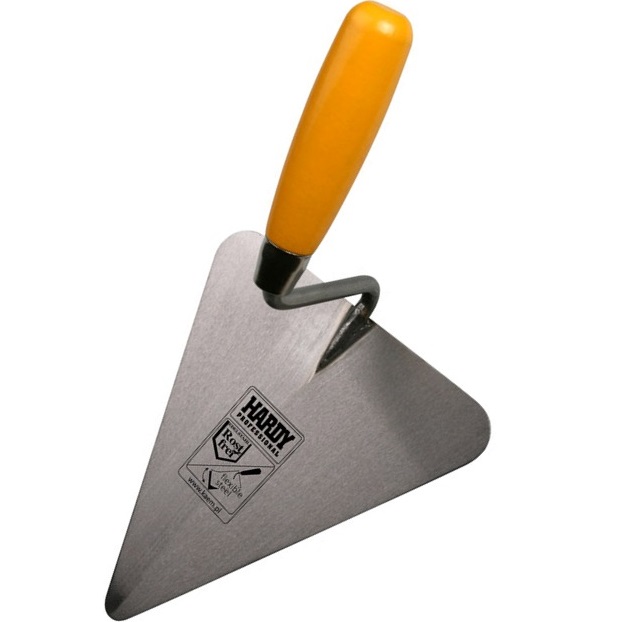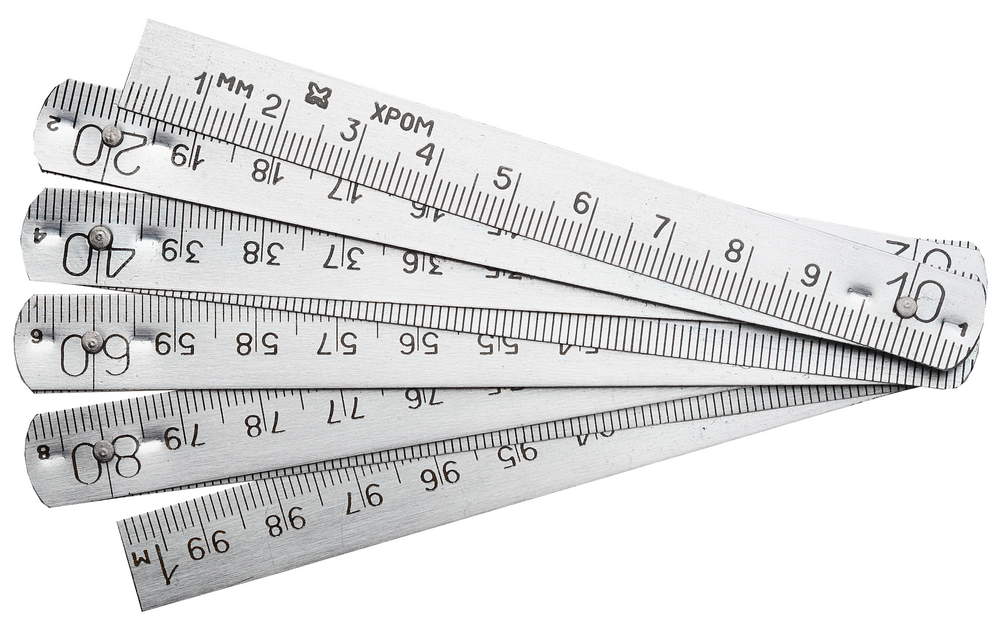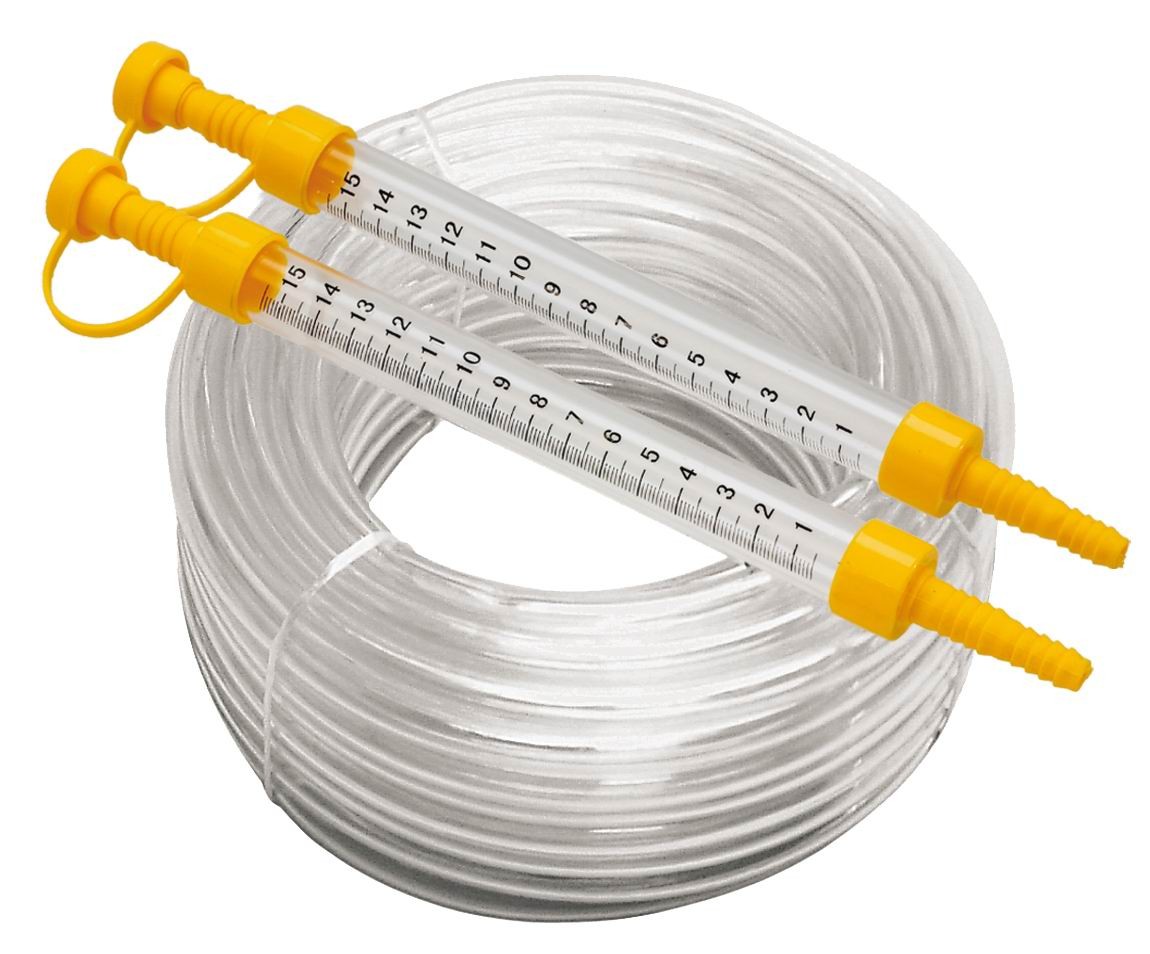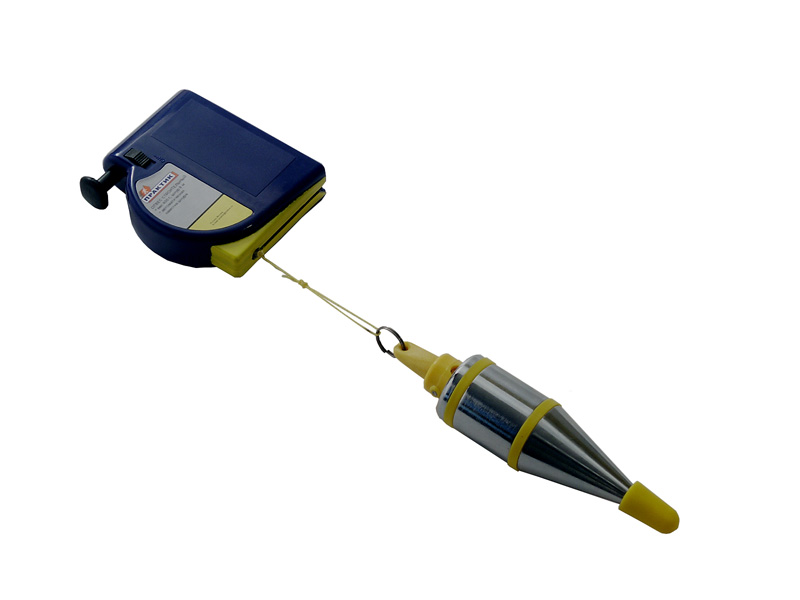Brickwork reinforcement snip. Stone and reinforced stone structures
The fundamental document for most construction work is SNiP for brickwork walls. This set of standards and rules includes the maximum full list requirements both for materials and tools used in the construction of walls, and for the specifics of performing individual operations.
Key sections of SNIPs are based on current regulatory documents, and therefore they must be complied with without fail.
Normative base
Strictly speaking, there is no single SNiP “Brickwork of walls”, since stone work require compliance with a huge number of rules and regulations related to various aspects of the construction industry.
That is why, when discussing construction standards relating to the construction of external and internal itself load-bearing walls, interior partitions and cladding, experts turn to a whole range of documents:
- Organization of construction. Organization of production in construction and architecture - SNiP 12 - 01 - 2004.
- Load-bearing and enclosing capital structures - SNiP 3.03.01 - 1987.
- Occupational safety and health in construction and production – SNiP 12 – 04 – 2992 (Section IX), as well as SNiP 12 – 03 – 2001 (Part 1).
These standards contain information regulating the entire process of work on the construction of walls and other architectural elements made of brick or building stone. GOST for brickwork is mandatory for all permanent buildings without exception, so you need to study the requirements even if you plan to build a small shed on your site with your own hands.
Preparatory stage
Preliminary work
Laying building blocks in accordance with building regulations can only be carried out on specially prepared sites. Masonry begins either after the construction of the foundation ( one-story construction or construction of the first floor), or after completion capital works on previous floors.
In preparation:
- All work on the construction of the foundation or plinth is completed, interfloor ceilings are installed, stairs and blocks are installed elevator shafts.
- Geodetic survey and site marking are carried out.
- The compliance of the constructed elements with the plan or the results of topographic survey is monitored.
- Delivery will be arranged building material and solution directly to the place of work.
Note!
The material can either be stored directly on the floor within walking distance of the working areas, or the delivery of bricks in pallets using a crane can be arranged for each area separately.
- The sites are provided with everything necessary to carry out work with proper labor productivity. The list of material support includes scaffolding with adjustable platform heights, tools, equipment and facilities personal protection.
- Subject to compliance with SNiP, the laying of brick walls must be carried out by specialists with certain qualifications and who have undergone appropriate instruction. The briefing includes familiarization with the general work plan, monitoring the assimilation of information on the technique of performing work operations, as well as familiarization and testing of knowledge on safety and labor protection.
Mason's equipment
SNiP for bricklaying provides for the provision of each work crew devices and devices necessary to perform work at the proper technical level.
The list of tools includes:
- Mortar shovels.
- Trowels (trowels) for collecting and distributing mortar throughout the masonry.
- A duralumin rule for leveling the mortar and controlling the plane of the masonry.
- Hammers for splitting building block.
- Joints for finishing seams.
- Mop to clean cavities from solution.
Note!
When working with a hammer-pick, it must be replaced with circular saw or corner grinder with a canvas corresponding to the cladding material.
- Staples and beacons from of stainless steel.
- Mooring lines. You can use a cord on a reel, but it is more rational to use models in cases with a handle for winding.
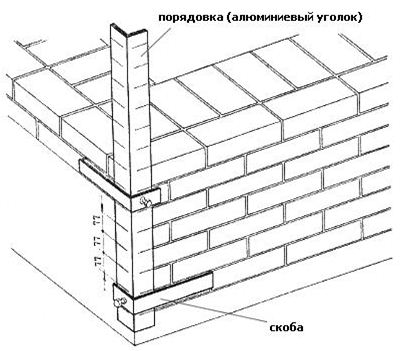
All tools must comply with GOST requirements. The use of faulty tools or improvised materials is not permitted.
Material requirements
An important step in preparation is to ensure construction crews materials corresponding technical specifications and GOST standards for this type of work. For this purpose, the site organizes acceptance and quality control of incoming building materials.
The main materials used for the construction of walls and partitions are brick and building stone. As a rule, materials are delivered in batches on special pallets.
When a pallet arrives, its packaging is opened and the following controls are carried out:
- Documentary– checking the compliance of the accompanying information about the batch with the data specified in the incoming documents.
- Instrumental— checking the dimensions of the supplied building blocks.
- Visual– monitoring the compliance of the actual material supplied with the information specified in the invoices, as well as assessing the quality of the brick and identifying the most pronounced deficiencies.
Note!
It is strictly prohibited to use bricks and building stones for the construction of self-supporting structures and partitions, for which accompanying documents have not been provided.
As for the visual inspection, during its course the receiving specialist assesses the presence of the following defects:
- Chips on the edges and faces of building blocks.
- Damage to the facial planes (tray and butt edges) in facing bricks.
- Changes in the shape of the block, the presence of depressions, cracks and swellings.
- Bundles ceramic material, which may indicate the so-called “underburning” - insufficiently high-quality temperature treatment.
- Salt stains on brick surfaces.
The amount of so-called polovnyak is determined separately - broken bricks or blocks that have cracks measuring more than 30% of the total length of the stone. The amount of polovnyak in a batch depends on the quality of the material, but the requirements for brickwork according to SNiP limit its share to 5% of total number blocks.
The quality of the solution is assessed separately:
- Mobility – 7 cm or more.
- The brand of solution must correspond to the design one.
- When carrying out work in winter, a plasticizer (soaped lye) must be added to the solution for more active air entrainment. The proportion of liquor should be no more than 858 g per 1 kilogram of dry cement.
- Also, when masonry is carried out at air temperatures below -15 0 C, the grade of the mortar is increased by one grade to ensure the required quality of the connection.
Requirements for structures
Construction of main elements
According to SNiP 3.03.01 - 1987, the instructions for the construction of main self-supporting walls (both internal and external) contain the following recommendations:
- The mortar for laying bricks and building stones is selected depending on the type of material and operating conditions of the structure. The solution is supplied either automatically or in molds using a truck crane.
- The basement elements of the building are erected from concrete slabs or using. The use of silicate blocks, as well as hollow stones, leads to a decrease in the mechanical strength of the building and is therefore not allowed.
- According to GOST requirements brickwork should not contain holes, niches and cavities that are not provided for in the design and that reduce mechanical strength walls.
- The stonework is done by hand, the elements are arranged according to the type of dressing approved in the project. To connect individual blocks, in addition to mortar, reinforcing parts (rods, mesh), as well as metal embedded parts, can be used.
Note!
When a forced rupture is formed, the masonry is located in the form of a straight or inclined groove.
Appearance and the design of the fines are shown in the diagrams in this article.
- Seams between bricks correct form must have constant thickness: vertical – 10 mm, horizontal 12 mm. The thickness of the horizontal seam increases if reinforcing material is placed in the seam.
SNiP for masonry configuration
Except general requirements, the standards also contain information about the procedure for forming the masonry itself:
- Bonded rows (i.e. rows in which the bonded edge of the brick appears on the front surface of the masonry) must be laid from whole blocks.
- Regardless of the type of dressing and masonry pattern, a bonded row is formed in the lower and upper parts of the structure, at the level of cornices, window sills, edges, etc.
- It is also mandatory to lay a butt row under the supports of rafters, beams, roofing mauerlats, etc.
Note!
The support of these elements on spoon rows is allowed only if during construction and masonry a single-row chain ligation is used with alternating spoon and butt edges in one row.
- Pillars and piers must be built from whole bricks, the width of which does not exceed two and a half blocks.
- Polovnyak is used for laying walls of lightly loaded structures, as well as for backfill masonry. But even in this case, the share of chaff should not exceed 10% of the total volume of material used.
- Reinforcement of lintels over window and doorways, as well as over other technological openings, is carried out using formwork. The lintels are laid in mortar under the bottom row of brickwork and embedded in the pier to a depth of 250 mm or more.
- The holding time of the formwork for installing the lintel depends on the air temperature and ranges from 5 days (+20 0 C and above) to 24 days (+5 0 C and below).
- When laying cornices, the overhang of each row should not exceed 1/3 of the length of the building block. General removal of the cornice, not reinforced with additional metal elements, should not be more than half the thickness outer wall.
Advice!
Laying the cornice is necessarily accompanied by the installation of temporary supporting structures.
They must be strong enough to support the cornice blocks until the mortar completely hardens and prevent it from deforming.
Reinforcing masonry with metal reinforcement
Reinforcement of masonry with metal rods or mesh is used when constructing partitions of small thickness, or when laying walls made of energy-efficient hollow bricks. The use of steel embedded parts increases the performance characteristics of the structure, but also total price object increases, and significantly.
The requirements put forward by SNiP for reinforced masonry are as follows:
- The thickness of the seam is calculated as follows: a minimum of 4 mm must be added to the sum of the diameters of the intersecting reinforcement. Thus, when reinforced with a mesh of 5 mm rod minimum thickness the seam should be 5+5+4 = 14 mm.
Note!
The maximum permissible seam thickness is 16 mm.
- Reinforcement of a longitudinal seam involves connecting reinforcing bars by welding.
- If used metal grid, or the rods are connected mechanically, then the overlap should be at least 20 diameters of the metal element.
Quality and safety of work
Quality control
The final stage of any work is quality control of the erected masonry.
This procedure includes:
- Acceptance of work that preceded the execution of masonry (preparation of the base, installation of partitions, foundations, etc.).
- Visual and instrumental assessment of materials used for work, as well as periodic inspection of tools and work equipment.
- Operational control, which consists in monitoring the progress of masonry and identifying inconsistencies with the order of work approved in the technological map.
- No more than 15 mm - according to the thickness of the wall being built.
- No more than 15 mm - along the width of the wall.
- 20 mm – permissible displacement of adjacent axes window openings.
- 10 mm is the permissible deviation of metal or reinforced concrete embedded structures.
- Vertical deviation is 10 mm or less within one floor.
- Deviation along the plane is no more than 10 mm (5 mm for plastered walls) when applying a two-meter test strip.
- The delivery of the material must be carried out by specialists who have been trained and qualified as slingers. Coordination of the work of the slinger and the crane operator is carried out using radiotelephone communication.
- All openings intended for the installation of translucent structures should be blocked until glazing. wooden shields.
- Scaffolding for masonry must be made of either metal profile, or from wooden beam. It is strictly prohibited to use boxes, pallets, furniture or other improvised means as scaffolding.
- Each worker must be provided with special clothing and footwear, as well as personal protective equipment. TO mandatory list equipment includes a helmet and a mounting belt. The use of safety glasses and a respirator is necessary when performing certain types of work.
- High-altitude work are carried out only if there is a correctly worn and secured mounting belt.
The basis for acceptance control is the legally approved tolerances for brickwork according to SNiP, which require the following deviations:
Only after checking these parameters is the work accepted, about which a corresponding entry is made in the acceptance certificate.
Occupational Health and Safety
When carrying out construction work, it is necessary to adhere to the requirements for the safe organization of the masonry process:
Only special scaffolding should be used
Construction waste generated on the site is regularly collected in containers for subsequent disposal.
Conclusion
Compliance building codes and the rules for constructing walls made of brick or stone are prerequisite to achieve an acceptable result. Only brickwork of external walls and internal partitions made in accordance with the requirements of SNiP will be sufficiently strong and reliable. Also, do not forget about another aspect, because by adhering to the methods of performing work operations established in the standards, master masons increase the level of their own safety. In the video presented in this article you will find additional information on this topic.
BUILDING REGULATIONS
STONE AND REINFORCED STONE STRUCTURES
SNiP II-22-81
(as amended by Changes,
approved Decree of the USSR State Construction Committee dated September 11, 1985 N 143,
Changes No. 2 adopted by the Resolution
Gosstroy of the Russian Federation dated May 29, 2003 N 46)
Developed by the Central Research Institute building structures(TsNIISK) named after. V.A. Kucherenko State Construction Committee of the USSR.
Introduced by TsNIISK them. Kucherenko State Construction Committee of the USSR.
With the entry into force of this chapter of SNiP, chapter SNiP II-B.2-71 "Masonry and reinforced masonry structures. Design standards" is cancelled.
Editors - engineers F.M. Shlemin, G.M. Khorin (Gosstroy USSR) and candidates of technical sciences. Sciences V.A. Kameiko, A.I. Rabinovich (TsNIISK named after V.A. Kucherenko).
When using a regulatory document, you should take into account the approved changes to building codes and regulations and state standards published in the journal "Bulletin construction equipment" and information index " State standards"Gosstandart of Russia.
1. GENERAL PROVISIONS
1.1. The standards of this chapter must be observed when designing stone and reinforced stone structures new and reconstructed buildings and structures.
1.2. When designing stone and reinforced masonry structures, you should use Constructive decisions, products and materials that provide the required bearing capacity And thermal characteristics designs.
(clause 1.2 as amended by Amendment No. 2, adopted by Resolution of the State Construction Committee of the Russian Federation dated May 29, 2003 No. 46)
1.3. Application sand-lime bricks, stones and blocks; stones and blocks made of cellular concrete; ceramic bricks and stones, concrete blocks with voids; ceramic bricks of semi-dry pressing are allowed for external walls of rooms with wet conditions, provided they are applied to them internal surfaces vapor barrier coating. The use of these materials for the walls of rooms with wet conditions, as well as for the external walls of basements and plinths, is not allowed. The humidity conditions of the premises should be taken in accordance with SNiP for thermal protection.
1.4. The strength and stability of stone structures and their elements must be ensured during construction and operation, as well as during transportation and installation of elements of prefabricated structures.
(clause 1.3 as amended by Amendment No. 2, adopted by Resolution of the State Construction Committee of the Russian Federation dated May 29, 2003 No. 46)
1.5 was dropped as of July 1, 2003. - Change No. 2, adopted by Resolution of the State Construction Committee of the Russian Federation dated May 29, 2003 No. 46.
1.6. When designing buildings and structures, measures should be taken to ensure the possibility of their construction in winter conditions.
2. MATERIALS
2.1. Brick, stones and mortars for stone and reinforced stone structures, as well as concrete for the manufacture of stones and large blocks must meet the requirements of the relevant GOSTs and be used in the following grades or classes:
(as amended by Amendments, approved by Resolution of the USSR State Construction Committee dated September 11, 1985 N 143)
a) stones - according to compressive strength (and brick - for compressive strength taking into account its bending strength): 7, 10, 15, 25, 35, 50 (low-strength stones - light concrete and natural stones); 75, 100, 125, 150, 200 (medium strength - brick, ceramic, concrete and natural stones); 250, 300, 400, 500, 600, 800, 1000 (high strength - brick, natural and concrete stones);
b) concrete classes according to compressive strength;
heavy - B3.5; AT 5; B7.5; B12.5; B15; IN 20; B25; B30;
on porous fillers - B2; B2.5; B3.5; AT 5; B7.5; B12.5; B15; IN 20; B25; B30;
cellular - B1; AT 2; B2.5; B3.5; AT 5; B7.5; B12.5;
large-porous - B1; AT 2; B2.5; B3.5; AT 5; B7.5;
porous - B2.5; B3.5; AT 5; B7.5;
silicate - B12.5; B15; IN 20; 825; B30;
(subparagraph b) as amended. Changes, approved. Decree of the USSR State Construction Committee dated September 11, 1985 N 143)
c) solutions based on compressive strength - 4, 10, 25, 50, 75, 100, 150, 200;
d) stone materials for frost resistance - F 10, F 15, F 25, F 35, F 50, F 75, F 100, F 150, F 200, F 300.
(as amended by Amendment No. 2, adopted by Resolution of the State Construction Committee of the Russian Federation dated May 29, 2003 No. 46)
For concrete, frost resistance grades are the same, except for F 10.
(as amended by Amendment No. 2, adopted by Resolution of the State Construction Committee of the Russian Federation dated May 29, 2003 No. 46)
2.2. Solutions with a dry density of 1500 kg/m3 and more are heavy, up to 1500 kg/m3 are light.
2.3. Design grades for frost resistance of stone materials for the outer part of walls (12 cm thick) and for foundations (full thickness), erected in all construction and climatic zones, depending on the expected service life of structures, but not less than 100, 50 and 25 years , are given in table. 1 and paragraphs. 2.4 and 2.5.
ConsultantPlus: note.
By Decree of the USSR State Construction Committee dated December 5, 1983 N 311, SNiP 2.02.01-83 “Foundations of buildings and structures” was put into effect on January 1, 1985.
Note. Design grades for frost resistance are established only for the materials from which the building is built. top part foundations (up to half the calculated depth of soil freezing, determined in accordance with the chapter of SNiP "Foundations of buildings and structures").
Table 1
┌────────────────────────────┬────────────────────────────────────┐
│ Type of structures │ F values at assumed │
│ │ service life of structures, years │
│ ├───────────┬──────────┬─────────────│
│ │ 100 │ 50 │ 25 │
├────────────────────────────┼───────────┼──────────┼─────────────│
│1. External walls or their │ │ │ │
│ cladding in buildings with │ │ │ │
│ humidity conditions │ │ │ │
│ premises: │ │ │ │
│ a) dry and normal │ 25 │ 15 │ 15 │
│ b) wet │ 35 │ 25 │ 15 │
│ c) wet │ 50 │ 35 │ 25 │
│2. Foundations and underground │ │ │ │
│ parts of walls: │ │ │ │
│ a) made of clay brick │ │ │ │
│ plastic pressing│ 35 │ 25 │ 15 │
│ b) from natural stone │ 25 │ 15 │ 15 │
│ │ │ │ │
ConsultantPlus: note.
By Decree of the USSR State Construction Committee dated August 20, 1984 N 136 from January 1
1986 SNiP 2.03.01-84 “Concrete and
reinforced concrete structures".
│ Notes. 1. Brands for frost resistance of stones, blocks and│
│panels made from concrete of all types should be taken in│
│in accordance with the chapter of SNiP for the design of concrete and│
│reinforced concrete structures. │
│ 2. Frost resistance grades given in table. 1, for everyone│
│building and climatic zones, except those specified in clause 2.5 of these│
│standard, can be reduced for masonry from clay brick│
│plastic pressing at one stage, but not lower than F 10 in│
│in the following cases: │
│29.05.2003 N 46) │
│ a) for external walls of rooms with dry and normal│
│humidity conditions (item 1, a), protected with outside│
│cladding with a thickness of at least 35 mm that meets the requirements│
│according to frost resistance given in table. 1, frost resistance│
│face brick and ceramic stone must be at least F│
│25 for all service life of structures; │
│(as amended by Amendment No. 2, adopted by the Resolution of the State Construction Committee of the Russian Federation dated│
│29.05.2003 N 46) │
│ b) for external walls with damp and wet conditions of rooms│
│(pos. 1, b and 1, c), protected from the inside│
│waterproofing or vapor barrier coatings; │
│ c) for foundations and underground parts of walls of buildings with│
│sidewalks or blind areas erected in low-moisture soils, if│
│level groundwater below the planning level of the ground by 3 m and│
│more (item 2). │
│ 3. Frost resistance grades given in pos. 1 for│
│claddings with a thickness of less than 35 mm are increased by one step, but not│
│above F 50, and the cladding of buildings erected in Northern│
│construction-climatic zone, - by two levels, but not higher│
│F 100. │
│(as amended by Amendment No. 2, adopted by the Resolution of the State Construction Committee of the Russian Federation dated│
│29.05.2003 N 46) │
│ 4. Grades for frost resistance of stone materials given│
│in pos. 2, used for foundations and underground parts of walls,│
│should be increased by one step if the groundwater level is lower│
│planning level of the ground less than 1 m. │
│ 5. Stone grades according to frost resistance for open masonry│
│structures, as well as structures of structures erected in the zone│
│variable groundwater level ( retaining walls, tanks,│
│weirs, side stones etc.), are accepted according to regulatory standards │
│documents approved or agreed upon by the USSR State Construction Committee. │
│ 6. As agreed with the customer, testing requirements│
│frost resistance is not required for natural stones│
│materials that have been shown by past construction experience│
│sufficient frost resistance under similar operating conditions. │
│(clause 6 of the note as amended by Amendment No. 2 adopted by the Resolution│
│ 7. For external walls of multilayer masonry with thickness│
│outer layer no more than 120 mm, behind which is located│
│insulation, the frost resistance grade of the front layer should be│
│take one step more than the main masonry. │
│(clause 7 of the note was introduced by Amendment No. 2 adopted by the Resolution│
│Gosstroy of the Russian Federation dated May 29, 2003 N 46) │
└─────────────────────────────────────────────────────────────────┘
(as amended by Amendment No. 2, adopted by Resolution of the State Construction Committee of the Russian Federation dated May 29, 2003 No. 46)
2.4. For construction areas located east and south of the cities: Grozny, Volgograd, Saratov, Samara, Orsk, Karaganda, Semipalatinsk, Ust-Kamenogorsk, requirements for frost resistance of materials and products used for structures specified in table. 1, it is allowed to reduce by one step, but not lower than F 10.
(as amended by Amendment No. 2, adopted by Resolution of the State Construction Committee of the Russian Federation dated May 29, 2003 No. 46)
Note. The magnitudes of the steps correspond to the values given in paragraph 2.1, d.
2.5. For the Northern construction-climatic zone, as well as for the coasts of the Arctic and Pacific oceans with a width of 100 km, not included in the Northern construction-climatic zone, grades for frost resistance of materials for the outer part of the walls (for solid walls - to a thickness of 25 cm) and for foundations ( for the entire width and height) should be one step higher than those indicated in the table. 1, but not higher than F 50 for ceramic and silicate materials, as well as natural stones.
(as amended by Amendment No. 2, adopted by Resolution of the State Construction Committee of the Russian Federation dated May 29, 2003 No. 46)
Note. Definitions of the boundaries of the Northern construction-climatic zone and its subzones are given in the chapter of SNiP on construction climatology and geophysics.
2.6. For the reinforcement of stone structures in accordance with the chapter of SNiP on the design of concrete and reinforced concrete structures, the following should be used:
for mesh reinforcement - reinforcement classes A-I and Bp-I;
for longitudinal and transverse reinforcement, anchors and ties - reinforcement of classes A-I, A-II and Bp-I (taking into account the instructions of clause 3.19).
For embedded parts and connecting plates, steel should be used in accordance with the chapter of SNiP on the design of steel structures.
When it comes time to build a brick wall, there are a number of guidelines to keep in mind that you need to follow. SNiP lays out brickwork on the shelves, how and according to what indicators construction should take place, what standards should be met.
Before starting any brickwork, a number of preparatory work must be completed:
- It is required to completely complete all construction work related to the non-residential floor.
- Geodesy and all diagrams have been checked and the construction of floors has been completed.
- All construction materials near the construction site must be prepared.
- Needs to be prepared for work Building tools, worker protection equipment and first aid equipment.
- All workers involved in the project must be familiar with the construction scheme, as well as safety precautions.
There are a number of instructions regarding the storage and storage of materials, as well as construction equipment. When receiving building materials, documents are reviewed to determine the quality of the material. Afterwards, the data in the “passport” is compared with a visual inspection. Only after this can you use this material.
A number of indicators that should be checked include:
- Name and address of the supplier's company.
- Serial number, as well as the date of issue of the document indicating quality.
- Marking of goods delivered and Quantity of products received.
- The date according to which the material was manufactured.
- The quality of the resulting material and compliance with GOST.
Installation technology
The entire process of laying a brick wall must be carried out in accordance with the standards and according to the drawing. It is recommended to use masons of 2-5 categories. The work is performed in strict sequence, according to established standards:
- Marking walls, installing wooden openings on the base.
- Installation of the ordering rail (if necessary).
- Pulling the cord along which the wall will be built.
- Preparing bricks for laying.
- Preparation of cement mortar.
- Laying bricks on mortar ().
- Inspection upon completion of construction work.
- Installation of channels above wooden openings to reduce the load on the tree.
Specialists of different categories are involved in the construction process. Specialists K1 and K2 carry out the laying of the outer wall and its further cladding. Masons of the 2nd and 4th categories perform masonry interior walls, resort to the help of K3. The stringing of the cord is carried out only by masons of the highest category, since the quality and slope of the building depend on them.
They often resort to reinforced masonry walls. It is worth noting that this method is only suitable for external walls. From reinforcing wire by welding work is being manufactured reinforcement mesh, which is placed between each level of brick.
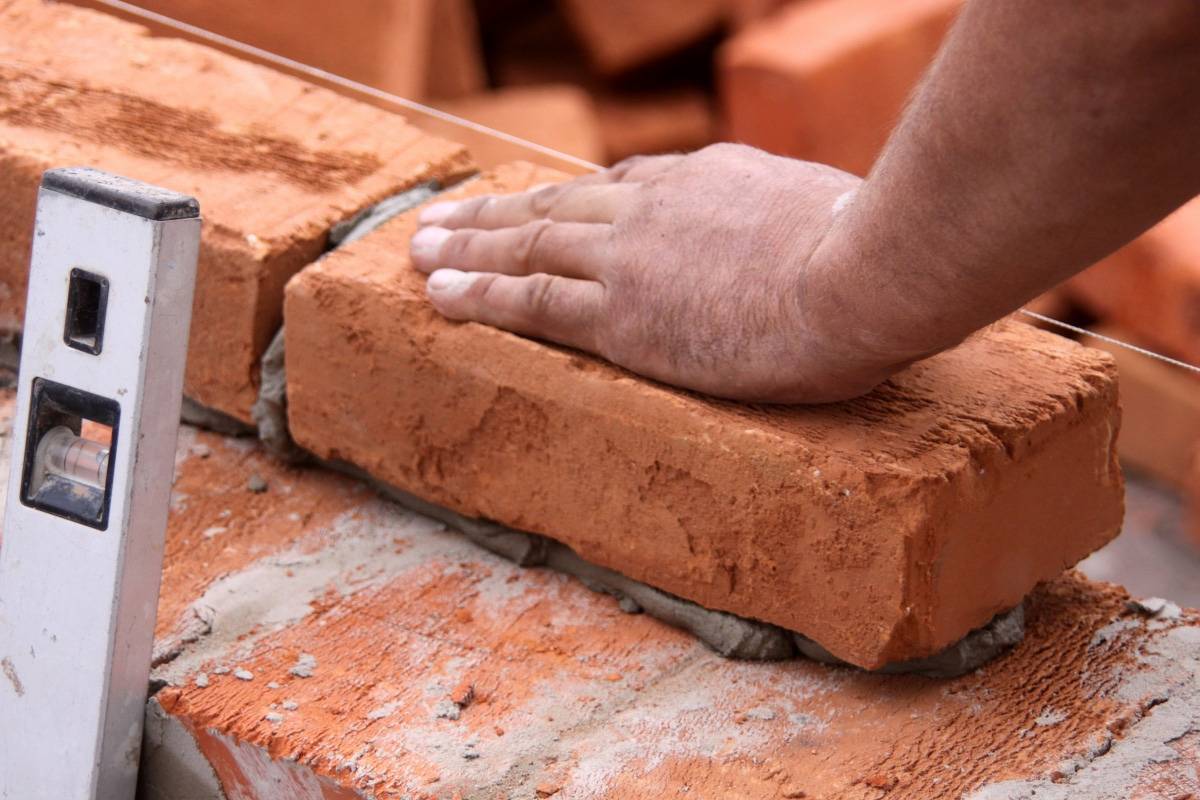
Masonry of internal walls and partitions
The construction of an internal load-bearing wall and partitions involves a number of specific actions. In general, the technology does not differ significantly from the masonry of external walls. It is only worth noting that ceramic bricks are used for partitions.
The mooring must be tensioned individually for each row of masonry. In places where two load-bearing walls intersect, both must be erected simultaneously. Unlike external walls, reinforcement can be carried out every 3-4 rows. The mortar must be evenly applied to the surface of the brick so that the joints are of equal thickness. The verticality of the edges and the accuracy of the masonry angles must be checked at each level without fail.
The installation of a channel as a lintel over windows and doors is carried out using construction equipment. On brick base apply the solution in advance. When installing them, you should pay attention to the vertical and horizontal marks and the support of the jumpers. In addition, it is necessary to install reinforcement to support the face of the brick.
Wooden formwork should be removed no earlier than after 5-6 days. Concerning winter period, then experts recommend waiting 2 weeks.
Safety precautions
Every worker and project manager must be familiar with all safety regulations. All of them are clearly stated in SNiP 12-03-2001 “Labor safety in construction” section 1. Basic requirements. It is worth highlighting the basic rules:

Wall arrangement
- All lifting of building materials must be carried out using special lifting equipment and packaging material, which will help prevent them from falling.
- Workers who lift and receive construction material must be trained in slinging. In addition, maintain constant communication with the crane operator.
- All openings must be blocked to avoid accidents. On lower tiers A safety net must be secured to prevent workers and construction materials from falling.
- When carrying out construction work, it is prohibited to stand with your feet on fresh masonry or even lean on it. The structure is too unreliable and may collapse.
- The space between scaffolding and the masonry should not exceed half a meter so that the worker does not fall out. Scaffolds should be regularly cleared of debris that could cause worker falls or injury. The garbage is packed into bags and lowered by crane. It is strictly prohibited to dump production waste downstairs.
Failure to comply with safety regulations is a threat not only to the offender, but also to others. For each violation, a reprimand should be given; for systematic violations, suspension from work and fines should be issued.
Considering the fact that the price for the services of hired specialists is often equal to the cost of purchasing building materials, those who want to build a house, garage or barn on their site are tempted to do so. masonry work with your own hands. How can you do this if you have neither theoretical knowledge nor experience? The search for the necessary information is usually carried out on the Internet, using queries like: “SNiP brick masonry of walls and partitions.”
Note that there is no single document regulating masonry work with this name. There are standards according to which the design of stone structures is carried out, which will be difficult to understand for an ignorant person. And there is technological maps(each type of wall has its own), which are a guide for masons. For the convenience of the reader, we will summarize and compact the information contained in them, and accompany it with a video in this article for clarity.
A lot of attention is paid to the issues of organizing and ensuring the safety of work, SNiP for laying brick walls, since labor productivity, construction time, and the final result depend on them.
Ease of use is important
First of all, the mason must be able to comfortably move within his plot and work without unnecessary movements. Professional teams are usually divided into units, each of which consists of 2-3 masons with various qualifications. Which one exactly depends on the thickness of the masonry and its architectural complexity.

The plot is divided into three zones, which is clearly visible in the photo below:
- Working- this is a strip along a section of the wall, up to 70 cm wide, where masons work;
- Material storage area- a longitudinal strip up to one and a half meters wide, on which ordinary brick and mortar are placed. To perform masonry with simultaneous cladding, this zone must be twice as wide, since space is also required for the facing brick.
- Auxiliary area– the passage area takes up a little more than 0.5 m.

When there are openings in the wall, a container with mortar is placed opposite them, and it is more convenient to place a pallet with bricks on the line of the wall. If lightweight wall masonry is carried out, then the main materials are alternated with reinforcement and loose filler, or other heat-insulating material.
Solution
All materials must be prepared in advance, and only the solution is supplied immediately before the start of masonry. When building a small private house, it is much more convenient to mix it on site using factory-made masonry mixtures, which many manufacturers call “sand concrete.”
These are universal dry mixtures M150, which are suitable not only for laying bricks, but also for pouring floors. Compositions of a higher grade are used for pouring foundations, armored belts, and monolithic lintels. A package like the one in the photo below costs about 160 rubles. Colored mortars are usually used for laying decorative bricks.
 Factory dry masonry mixture
Factory dry masonry mixture 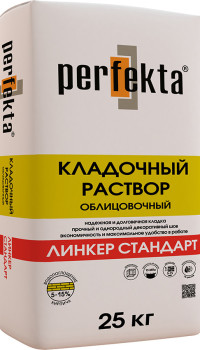
- If you decide what to buy ready-made mixtures It’s a little expensive, but nothing prevents you from installing a concrete mixer and making the solution yourself. When brick walls are erected, SNiP provides for the use of simple and complex masonry mortars.
- Simple solutions contain only one binder; complex solutions contain at least two. In the first case, it is cement or mortar, second option: lime-cement or clay-cement. Lime and cement play the role of a modifying additive and make it possible to obtain a solution with higher plasticity.
- The most popular cement mortar with lime additive, as it is suitable for all types of bricks, except raw clay stone (adobe). It just needs a clay-cement mortar, which is also suitable for the construction of any outbuilding.

Instructions for the proportions of binders and fillers in solutions are presented in the table above. The first in the line is cement, then the second binder, and then sand. Water is added until the required consistency is achieved, but usually its amount does not exceed 30% of the total mass. Sand can be used heavy (quartz) and light (pumice, slag).
Tools and accessories
The amount of equipment used in the work also depends on the volume of work and the complexity of the task being performed. On construction one-story house Some tools may not be needed, but the basic set of tools should be the same as you see in the table below.
| Appearance of the tool | Purpose |
|
|
There are many types of trowels, but for mason work, this triangular version is ideal. This shape allows you to select the solution in the corners, for which the nose of the tool is smoothly rounded. Its handle has a flat, sometimes even metal heel, to make it convenient to tap the brick. The blade of the trowel should be made of stainless steel, and its edges should be sharpened, which makes it possible to trim the brick. On average, the length of the shoulder blade is 16 cm and the width is 11 cm. |
|
|
This tool has a striker on one side, and a flat extension on the other, which is called a pick. It is pointed, which allows you to divide the brick into halves, or quarters and three-fours. It is also convenient to use if you need to remove old plaster. |
|
|
Along with a tape measure, a meter may also be needed in the work of a mason. In some situations, it turns out to be more convenient to use, since a second person is not required to measure a distance exceeding the length of an outstretched arm. |
|
|
Using a hydraulic level, the exact marks of the floor and ceiling are determined. |
|
|
This device allows you to control the horizontal position of structures and rows of masonry. If there are any upcoming plastering work, it is better to immediately purchase a rule with a built-in level. |
|
|
A tool for monitoring deviations of the wall plane from the vertical. |
|
|
Control of corners of adjacent structures. |
|
|
Container with mounting loops for supplying the solution to the floor with a crane. |
|
|
Device for working at height. |
|
|
A stretched cord is used to control the horizontality of the rows. |
|
|
These are wooden or aluminum slats with divisions applied every 77 mm. This distance corresponds to the height of a single brick, plus seams. The ordering ensures the uniformity of their thickness. |
Masonry work
The work operations performed during the masonry process are of unequal complexity. Accordingly, they are performed by masons of various qualifications. Depending on the task at hand, the composition of the units is determined.
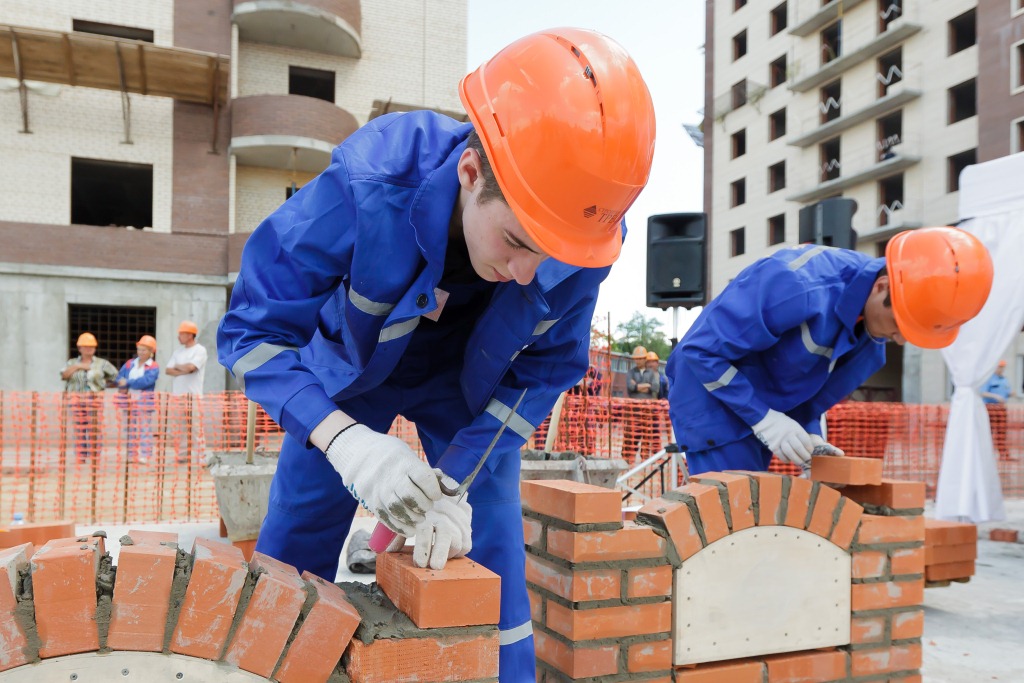
So:
- Masons with a higher rank are engaged in installing lines and moorings, laying beacons, and performing face masonry (outer verst).
- Low-skilled workers are engaged in laying out bricks, laying out a mortar bed, laying backfill rows, and filling voids in the well masonry.
- The specific number of masons in the units, and the division of responsibilities according to their category, depends on the thickness of the wall and its design features.
- For example: to lay a wall of 2 bricks, five masons are required: one V or VI category, one IV category, and the rest not lower than III category.
So, we can’t talk about independent work here. The partition is another matter - if there is an efficient assistant, the owner can easily erect it himself. However, he still must have an idea of the work performed by hired workers.
Features of lightweight walls
The main advantage of houses built of brick is their durability. Therefore, when a person wants to build, as they say, to last, he gives preference to this particular material. Moreover, in a low-rise building, even the walls are only one solid brick, are able to withstand loads from reinforced concrete slabs.
- The reliability of structures in this case depends only on the correctness of their installation and the quality of the masonry.
- On to the cons brick walls can only be attributed to their solid weight and low thermal performance. However, both of these disadvantages are eliminated through the use of lightweight masonry technologies.
- This includes the use of hollow (slotted) bricks, and the construction of wells in the walls, filled with lightweight concrete liners, liquid cellular concrete, foam or loose insulation.
- These technologies can not only reduce the load on the foundation and make the walls warm, but also significantly reduce the cost of construction.

 Single brick wall with cladding and mineral wool insulation
Single brick wall with cladding and mineral wool insulation 
![]()
To reduce the thermal conductivity of brick walls, masonry can be done using warm mortars prepared not with quartz, but with perlite or pumice sand. In this case, masonry technology with widened seams is often used, which makes it possible to reduce the thickness of the walls as a whole.
In the process of such masonry, the thickness of the longitudinal-vertical joints increases significantly, and due to this, the brick is not laid flat, but on the edge. We only note that this version of lightweight walls is not suitable for independent work. It is performed only according to the project in which it is assigned required thickness seams.

- Masonry with layers of thermal insulation materials, is always carried out with a gap corresponding to the thickness of the liner. His place is between the front milepost and the back row.
- In this design slab insulation a tight fit to the masonry must be ensured, for which it is first placed on glue and then fixed with dowels with a disk head.
- By the way: today there are not just dowels on sale, but basalt-plastic anchors, which allow you to simultaneously connect the walls to each other while attaching the insulation.
- One end of the anchor is mounted through the slab into the main masonry, and the second end, after installing the disk washer, is embedded in the seams of the outer wall.
Note! If the insulation is mineral, a gap of 3-4 mm is provided between it and the cladding, and in the bottom row of the wall itself the vertical seams are left unfilled. This ensures the drainage of condensate and protects the mineral wool from rotting. Polymer boards are not afraid of moisture, which means they do not need ventilation.
If the wells are filled with concrete or foam, then usually in every fifth row there are outlets of bonded rows, which should act as anchors. Using bulk materials, the walls are connected by strips of fine mesh steel mesh, which not only provides rigid fixation of the walls, but also does not allow the insulation to settle and bunch up below, leaving voids on top.
Constructive nuances of masonry
For the construction of external walls low-rise buildings, almost all types of bricks that are offered by manufacturers today are suitable. In addition to clay bricks: both solid and slotted, these are also hyper-pressed and silicate stones.
The limitations of the last two options apply only to the foundation and basement parts of buildings, as well as premises operated in conditions of high humidity.

So:
- According to SNiP: brickwork of external walls, their thickness cannot be less than 250 mm - that is, the length of one brick. The minimum cross-section of pillars (columns) is 380*380 mm.
- As for the partitions (see), when laying bricks flat, they will have a thickness of 120 mm. If the length of such a partition does not exceed 3 m, then the masonry may not be reinforced.
- But there is also a technology for constructing 65 mm thick brick partitions, in which the brick is laid on its edge. In this case, every third row of masonry must be reinforced with steel wire.
- You should try to do the laying of the outer verst using the highest quality bricks, leaving those that have cracks and chipped edges for backfill. If the walls are not supposed to be plastered, then it is better not to sort ordinary bricks, but to immediately buy facing bricks.

Lighthouses
The thickness of regular (not widened) seams can be 8-15 mm. As a rule, a thickness of more than 10 mm is made in the case when reinforcement is laid in the seam or the ends of the anchors are monolid.
The laying is carried out along a well-leveled foundation surface, and starts from the corners. On them, as well as in the areas where the openings are located, lighthouse fines tapering upward (safety) up to 6 or 8 rows high are first made.
Note! It is still possible to do without lighthouses when the building is small and a large team is working on the construction of its walls. Otherwise, masons have to take breaks, and mortars make it possible to firmly connect fresh masonry with previously completed masonry.
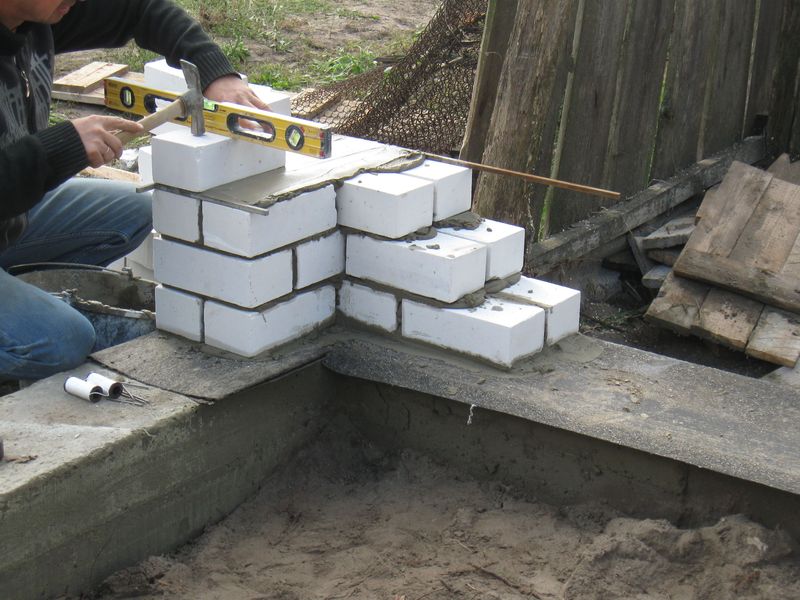
When the beacons are erected, a cord is pulled between them from the outside. Then they begin laying the outer verst, which is level with the top bricks. If the wall thickness is one brick, then the inner mile is made, which, like the outer one, will be a spoon.
After 6 rows, two spoon versts are tied with a butt row. According to this principle, dressing is carried out according to a multi-row pattern. But there may be other options - for example: when artistic masonry of walls is performed.
Jumpers
The installation of lintels over the openings of windows and doors is of no small importance. In houses with beam floors, not having as significant weight as concrete plates, they can howl made of brick. In cases where walls are supported concrete floors, the lintels are either prefabricated concrete, or a monolithic reinforced belt is poured over the opening (see).

- Since all lintels are structurally different, they rest on the masonry differently. In both private and large-scale construction, prefabricated concrete lintels are in high esteem.
- Slab-type lintels, that is, having a width greater than the height and immediately covering the entire opening along the thickness of the wall, require support heels of minimal depth - 10-12 cm is enough.
- For timber lintels, which, having a height greater than width, are not so stable, require 25 cm at each end. Jumpers made of steel channels or angles are also embedded into the masonry at the same distance.


However, where the masonry does not bear any loads other than its own weight - for example: in brick cladding, or filling frame-brick houses, there is no point in installing concrete lintels. It is much more convenient, and cheaper, to use rolled metal for this purpose. Its advantage is its light weight and the ability to cut to any length.

Brick lintels are installed only on openings less than two meters wide. Although, today there is a technology with hinged consoles that reinforce the masonry above the opening, and make it possible to make brick lintels over openings of any width.
If the lintels are to play the role of architectural decoration of the facade, then they should be made only of brick. In any case, the openings are triangular and arched shape, it won’t be possible to block it any other way.
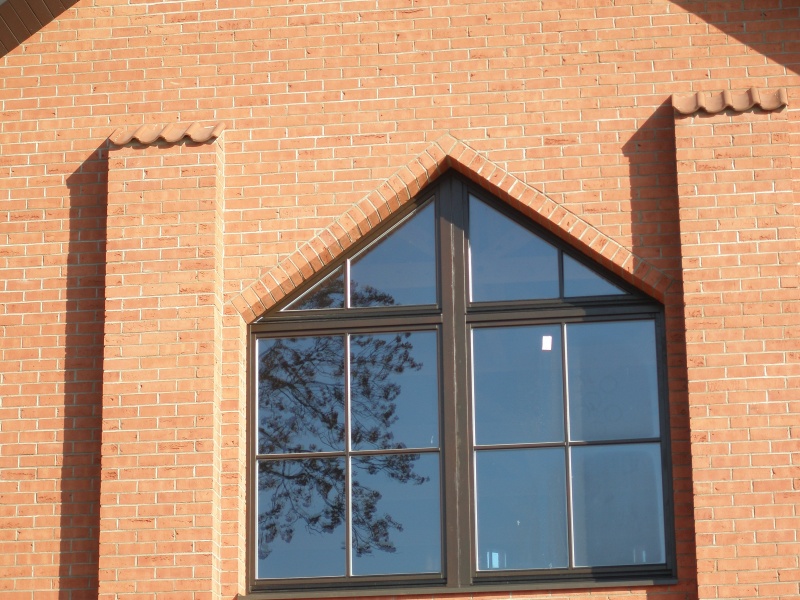
No “SNiP brick walls” will help cope with this task. Technological map (TC) No. 95-04 for laying vaults and arches of brick will serve as an excellent tool. But still, the best assistant is a video, and after watching several professional videos, it is quite possible to master the independent implementation of this element of masonry.

